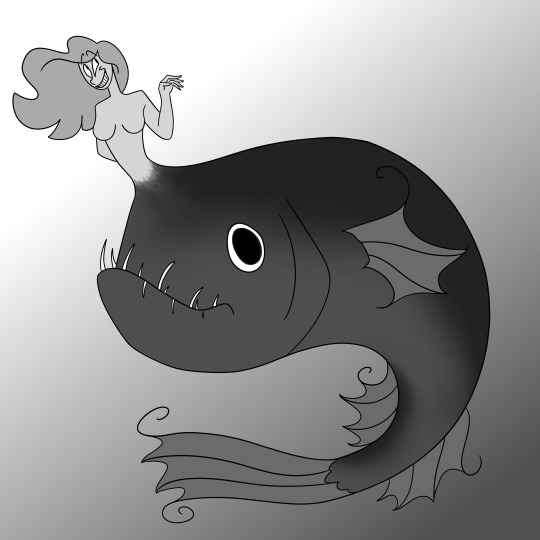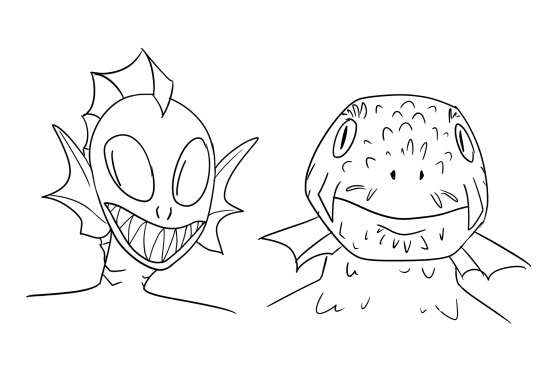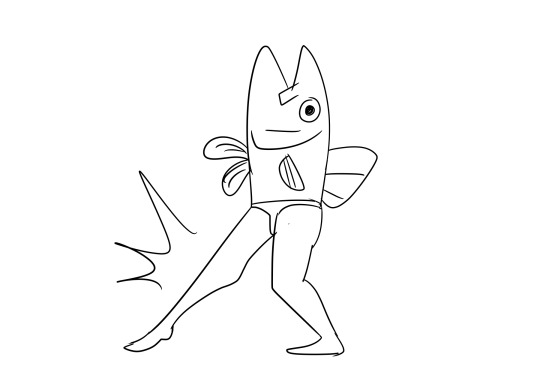#ironically she does not fit my mermaid categories haha! theres just that many mermaids and many interpretations are rather rare
Explore tagged Tumblr posts
Text

YOU GET IT!!!!

May I present, again, my anglerfish "mermaid"
Hi all! I'm back at it again with more questions about people's design preferences! Last time it was fish, this time it's mermaids (my second biggest aquatic obsession). I've divided types of merfolk I see a lot into different categories, vote for your favourite one!
Oh and if you have any in-depth opinions on these mermaids and when how or why they should be used, tell me! I love hearing about others' ideas!!
1. Aquatic human
Essentially a what-if situation of what a human that has evolved for an aquatic lifestyle would look like. It takes after cetaceans, pinnipeds and sirenians, but is not truly half-cetacean, half-pinniped or half-sirenian like other merms can be. Has a hairless or thick-haired hydrodynamic shape and most likely thick with insulating fat. Here's a drawing with two possible examples of what I mean, but the variations can really be endless!

2. The classic
A perfect 50-50 split, has a human upper body and the lower body takes after an aquatic animal. Merms with fish tails are the most common, but anything from cephalopods to crustaceans to cetaceans is just as possible. NOTE! Merms that also have scales on their chest and nowhere else on the upper body go here too, especially if male merfolk lack the scales but female merfolk have them.
3. The advanced
A mermaid who has more fish features on the upper body than category 2, but the upper body remains recognisably human. Some examples of possible fishy features include patches of scales or other unnatural colouration on the arms and hands, fins for outer ears, fins placed all over the body, or webbed fingers. Oftentimes the mermaid still has a human skin tone, the facial features are human, and the merm may have human hair! Once again this type of mermaid can also be based on any kind of aquatic animal. This sort of design is common when people turn their favourite fictional characters into mermaids, to keep their likeness clear. NOTE! Merms that have scales on their chest and nowhere else on the upper body go to category 2, especially if male merfolk lack the scales but female merfolk have them.
4. 75-25
This mermaid has a human upper body and a good bit of other humanoid features, but it is rather clear that this merm does not have human origins. Features common in these types of mermaids are an unnatural skin colour usually matching with their aquatic animal half, larger eyes, a reduced or no nose, sharp teeth, lack of hair or fins or scales taking the place of hair (hair can still be there!), more fishy appendages like fins or scales all over the body, and so on! Again, can be like other aquatic animals too. This category of mermaid is common as a "deep sea" or "siren" variant of the mermaid categories above, but it is not restricted to these types and can fill any role!
5. Humanoid fish
Essentially the opposite of the first category, this merm is like if a fish evolved to be humanoid! It tends to have a fish head or an extremely fish-like head, and a body that is covered in scales and fins all over. Can be more realistic like the fish man from Shape of Water or more cartoony, very akin to anthropomorphic fish! I am including both "true" mermaids, as in merms that have a tail for swimming instead of legs, and merfolk that do have humanlike legs here, since they're quite interchangeable. Though I describe them as fishy here, they can take after other aquatic animals too, fishes and cephalopods are the most common types!
If you have trouble distinguishing between categories 4 and 5, here's a drawing showing what the fishiest category 4 merm (left) will look like compared to a rather average category 5 merm (right):

6. Reverse mermaid
You know what a reverse mermaid is. I don't think I have to tell you.
...I still drew a picture, though:

#ironically she does not fit my mermaid categories haha! theres just that many mermaids and many interpretations are rather rare#technically she isnt even a real mermaid? she is a fish that evolved to lure in humans. but she is a mermaid TO ME IN MY HEART#uhhh... do i tag this for nudity? there is no nipple. the tit is not real. it is 1. a picture 2. a lure#ehh ask to tag if needed
451 notes
·
View notes